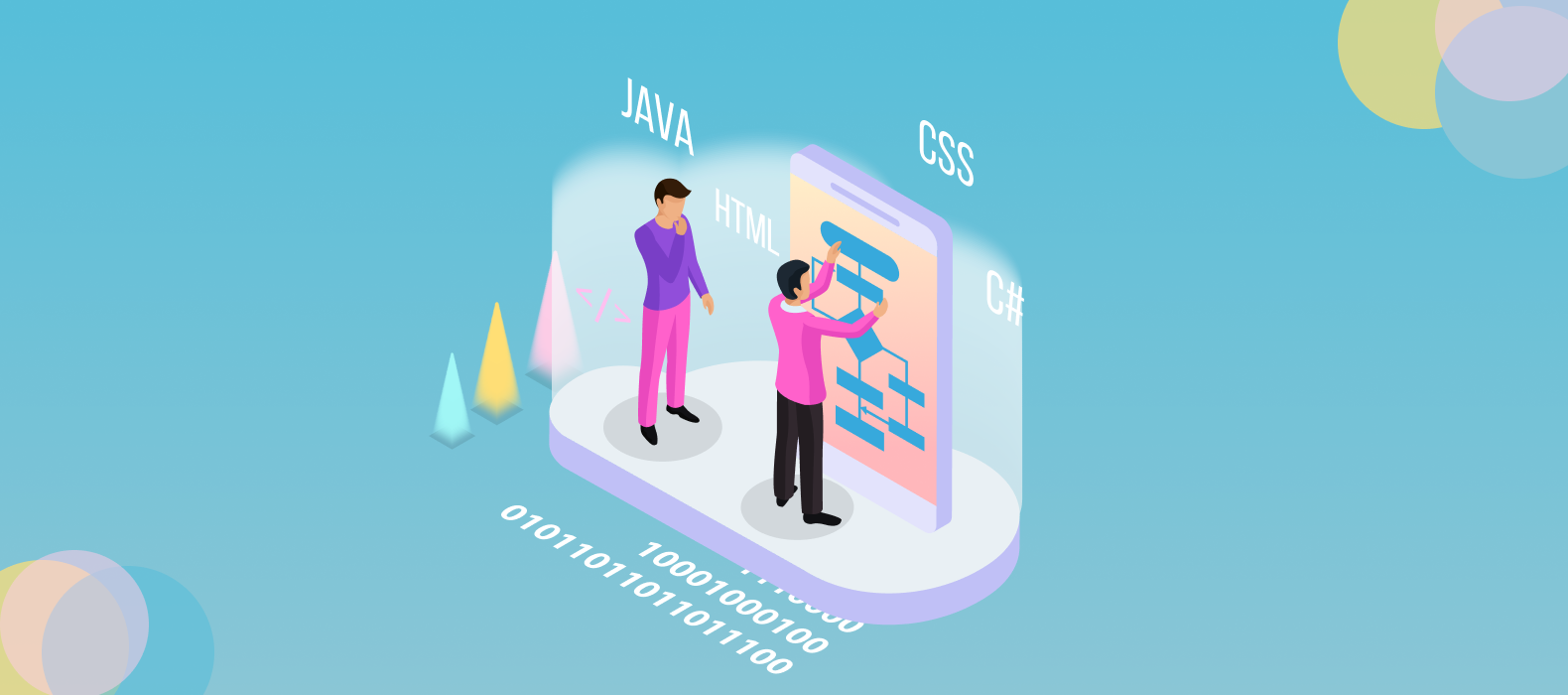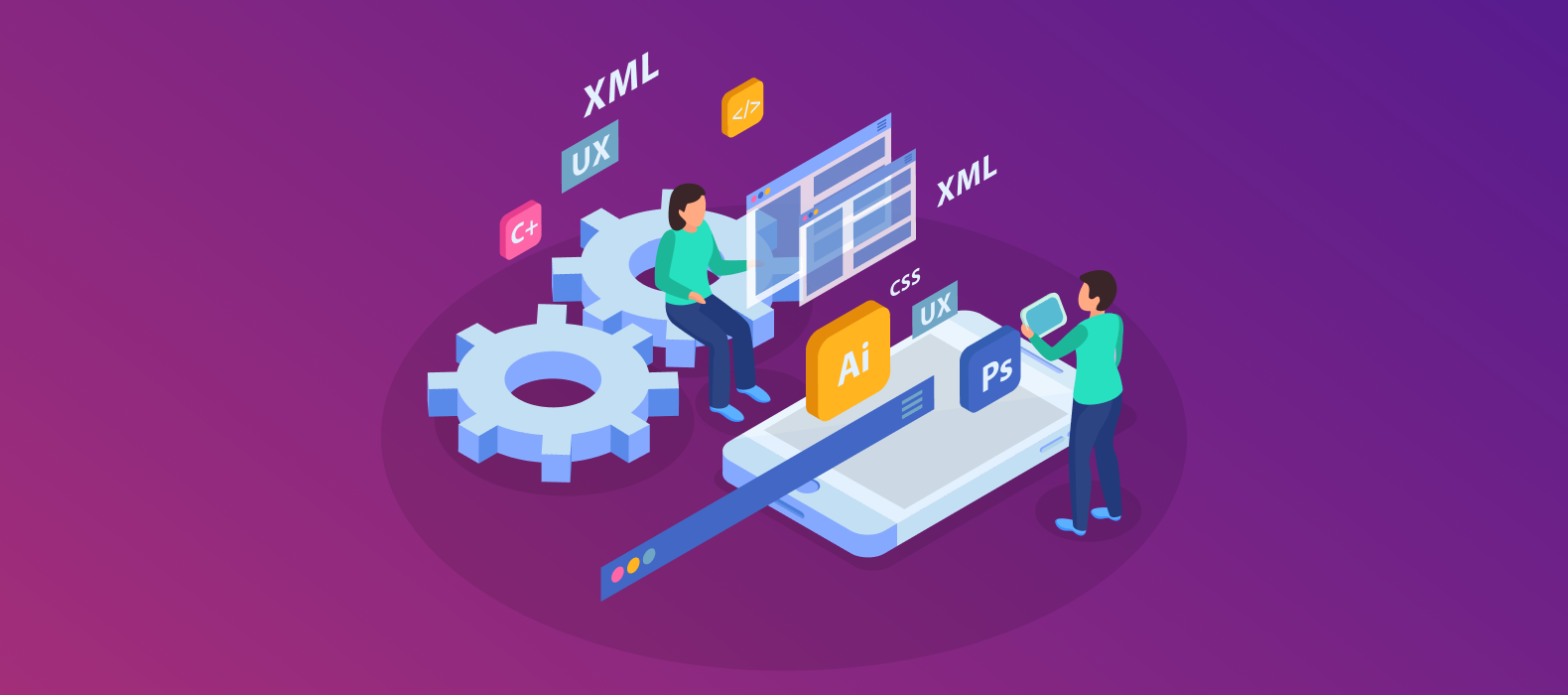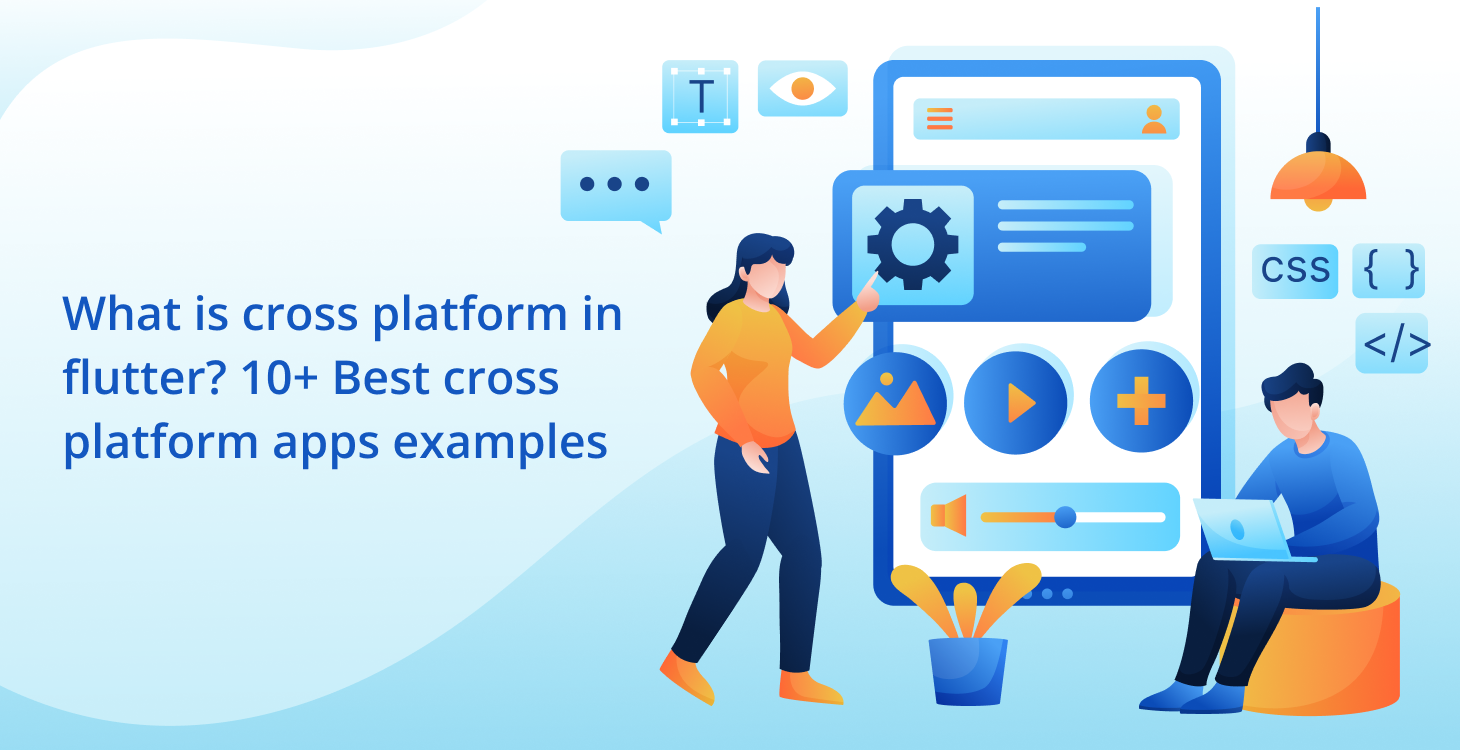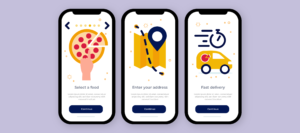What is a Cross Platform in Flutter? 10 Best Cross-Platform App Example.
Choosing the appropriate tech stack determines an application’s immediate success. However, choosing the technology that will drive your project forward can be challenging regardless of whether you are a startup or an established company. This is because the market is filled with excellent possibilities. We are easing your task with this blog by comparing the robust frameworks utilized for cross-platform app development. The demand for mobile app development is increasing along with the number of smartphone users (now 6.378 billion) to meet user demands. Regarding mobile app development, Android and iOS are the two most popular platforms.
Would writing a single code that runs on both platforms be beneficial? It is cost-effective and saves both time and resources. This is what cross-platform frameworks accomplish.
Stay tuned to learn more about cross-platform app development, cross-platform app examples and how it will help your company. Let’s dive in!
What is Cross Platform in Flutter?

Google developed the open-source Flutter framework, which enables the development of complex user interfaces for Android and iOS platforms using a single code base. During cross-platform development, Flutter’s “hot-reload” feature enables developers to add changes instantly. In contrast, Google’s Material Design enables them to alter every pixel on the screen using “widgets” to create uniform UI designs for all platforms. Flutter is praised for its incredible performance, rational architecture, and comprehensive documentation by cross-platform mobile app development proponents.
Defined, Flutter is Google’s portable UI toolkit for creating stunning, natively built-applications for any platform using a single codebase. Developers and businesses worldwide utilize Flutter, written in the Dart language, to swiftly and effectively release their minimum-viable apps.
Why do Companies Pick Flutter to Build Apps?

Some highly well-known and influential brands, including Google Ads, eBay, the BMW app, Tencent, Groupon, and others, have used Flutter in large projects for their mobile applications. But why they would pick Flutter over native languages or other cross-platform frameworks is a common question.
The fact is that Flutter offers businesses (and startups, for that matter) a plethora of opportunities that other cross-platform frameworks just cannot. Most importantly, Flutter offers a single codebase that enables the development of online applications, desktop operating systems, and embedded systems, including digital watches, medical equipment, and fitness trackers, in addition to iOS and Android apps.
Flutter offers direct access to native operating systems for APIs and microservices that are not “cross-platform friendly,” making API integration much simpler and more effective through Flutter channels. This is another crucial benefit the Flutter framework has over competing for cross-platform development frameworks. Due in large part to the fully customizable widgets, custom app development companies choosing Flutter over competing cross-platform frameworks may produce mobile apps with unmatched user experiences and visual designs. Dart’s features and JIT compilation also make hot reloads possible, which is impossible with other cross-platform development frameworks.
Let’s look at some of the Flutter applications you might utilize regularly. You might be pleasantly surprised by some of these mobile apps that use Flutter technology.
Best Cross Platform App Example

Here is a list of companies that use one or more Flutter apps to power their primary services. To find out how well-known companies worldwide used Flutter’s sophisticated functionalities like Material Design, hot reloads, and other features, we take a deeper look at the cross-platform app example.
1. Xianyu app:
Xianyu, a cross-platform app example, was used in developing an app by a team from the second-largest shopping platform owned by the Alibaba Group. More than 50 million people have downloaded it, and there are more than 10 million daily users. Time was saved by selecting Flutter because the app could be quickly created and maintained with just one codebase.
An existing app was available from Alibaba. Their effort started by gradually incorporating Flutter capabilities and adding more functionalities based on that framework.
2. Corner – live commerce app:
The corner is a social e-commerce cross-platform app example that allows live-streaming shopping. This company, founded in 2020, links customers who want to purchase the presented items straight from the application with brands and influencers who are live-streaming their product promotions.
After considering suggestions, the company created a Flutter app to launch the product as quickly as possible for Android and iOS, which was done to use this framework to build the Live Commerce solution. Flutter enabled this project to incorporate cutting-edge in-app views and streaming functionalities.
3. eBay Motors:
Flutter was used to build one of the most comprehensive retail platform offerings. With the help of this software, users may purchase and sell vehicles on their cell phones. They may quickly browse the offers, make adverts, and place bids on the cars they want.
The greatest difficulty the eBay engineering team had was the small amount of time they had to launch their product. They also desired an outstanding user experience with all the features that regular eBay users were accustomed to. They came upon Flutter, which was in its 1.0 form, and decided it was ideal for their purpose. The key benefits were fast programming, nearly no platform-specific code, and a fantastic user interface.
4. Cosinus app:
Cosinus, a cross-platform app example which is a national network of universities, vocational training programs, and free schools for children and adults. The business desired to increase the scope of its offerings by providing students with a mobile app. Cosinus’ technical director described the web platform’s features, and the objective was to translate those features into an app while adhering to mobile-friendly standards. The product caters to a vast customer base. They used the Flutter framework to create this app more quickly and effectively.
5. Philips Hue flutter app:
Philips Hue offers bright home lighting. They provide clients who desire intelligent home lights with lamps, bulbs, accessories, and starter kits. Hue Bluetooth and Hue Sync are two of their apps that were created using Flutter. Philips customers may adjust the light’s brightness and synchronize lamps with their media packages due to these portable controllers.
While there were other excellent options on the market, Philips chose Flutter and has been using it since 2018. They instantly connected with Flutter and realized it was the ideal solution for their project.
6. HuYu app:
When users share their shopping receipts with this app, they receive rewards. Scan your receipt, and after that, rate them in a survey. The data is used for market research and is anonymous. We earn points for those actions, which we can later redeem for gift cards and vouchers. The Flutter framework allowed for the rapid development of the app in about 4 months.
7. inKino Flutter app:
A cross-platform app example called inKino allows Flutter and the web to share code. Users of this app can explore movies and showtimes at Finnkino movie theatres. Flutter and the web each share 40% of the app’s code. Applications for both iOS and Android are created using the same Flutter core. AngularDart was used in the PWA (Progressive Web App) design process.
8. Reflectly app:
React Native, a still-popular cross-platform framework, was used to construct the app Reflectly as an example. The developers used this technique to program it for iOS. A difficulty arose when they chose to release the Android app. They decided to redesign the app in 2018 due to its popularity completely. For this, they went with Flutter, which is ideal. They rewrote their app in two months and released it for Android and iOS. In May 2019, the updated version was released.
As the version was being distributed to new and existing customers, they carefully watched for unforeseen issues. Even though Flutter is still in beta, they have not encountered any significant problems when utilizing it in production across thousands of users and hundreds of different iOS and Android devices.
9. Toughest app:
This app is designed in a flutter framework that you can use to assist you in getting ready for a job interview. Additionally, it has mental workouts. When preparing for the conversation with a possible employer, questions and responses organized into several categories might be helpful. According to the developers, you may use this program to prepare for 90% of the most frequent interview questions.
10. Cryptomaniac Pro:
This financial cross-platform app example gives users comprehensive data about bitcoin signals, news, and wallet history. We have access to information about more than 1600 cryptocurrencies inside the app. The application’s creators claim they wouldn’t have been able to deliver it in two months if it weren’t for Flutter. They have four apps for sale on the Google Play store. All of them were produced using Flutter, and others are currently being developed using the same coding language.
Comparison of Mobile Application Development Cross Platforms
| Flutter | React Native | Xamarin | |
| Platforms | iOS, Android, Linux, Mac, Windows | Android, iOS, macOS, Web, Windows, and UWP | Android, Android TV, iOS, macOS, tvOS, watch OS, Web, Windows, and UWP |
| Language | Dart | JavaScript +, Swift, Objective-C, Java | C# and .NET |
| UI | 9/10 | 7/10 | 4/10 |
| Application performance | 9/10 | 5/10 | 4/10 |
| Community | 8/10 | 8/10 | 7/10 |
| Hot reload | Yes | Yes | No |

With all the knowledge you need, you can now decide how to create cross-platform mobile apps that work for you.
Conclusion
Many apps are created with the Flutter framework, even though it is still a relatively new app creation method. The list of cross-platform app examples is listed above. Nearly 1900 Flutter apps are included, but not all are listed. The examples shown here demonstrate that cross-platform Flutter apps are a more than viable means of achieving business goals for both small and large businesses. It seems clear that cross-platform apps will continue to be developed for mobile platforms, with Flutter and React Native taking the lead for the foreseeable future.
Don’t hesitate to contact us if you consider utilizing Flutter in your project. To successfully construct your app, the Pairroxz team will give you advice and assist you in making the best decision.
FAQ’s
Question 1: Which is superior, Flutter or React Native?
React Native’s fiercest competitor, Flutter, occasionally surpasses React Native and vice versa. Flutter and React Native are solid choices for creating cross-platform apps and offer developers a good working environment. If you want to develop a simple app or cross-platform size an existing project, React Native is the best option. However, if you’re on a tight budget and want to customize the user interface (UI) with widgets, Flutter is the clear winner. React Native and Flutter each have their advantages and disadvantages.
Question 2: What is the cost of developing a Flutter app?
There isn’t a defined cost. Several variables, including the app’s size, category, complexity, & several features, affect the amount it will cost to design a Flutter app. The cost varies according to the development team’s location and the experience of the developers. You can avoid paying a license and use the code to develop apps for several platforms by using the free, open-source Flutter platform instead of hiring extra developers.
Question 3: Is Flutter the Next Big Thing in Mobile App Development?
Yes, Flutter has all the makings of an excellent framework for creating mobile applications. You can use it to make mobile applications that have a better user experience, more consistent performance, more effective programming, and need less time and effort. It includes everything you require to quickly and easily develop dedicated and successful mobile apps.




